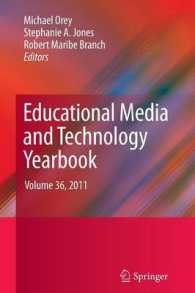Full Description
Community colleges have experienced a dramatic shift in focus and direction over the past 25 years. The impact of federal policy that emphasizes employment over education and the increased pressure for community colleges to meet the needs of local industries has led experts to ask whether or not contemporary community colleges are best serving their students. ''As a bridge between public K-12 schools and higher education, community colleges were designed as a gateway for groups of students who would otherwise be excluded from higher education, most notably poorer and minority students. Ideally, this education sector should be a democratizing force in American society. Yet community colleges continue to struggle with their mission, and a variety of factors make it increasingly difficult to meet it. ''The articles in this special issue of the ANNALS examine the role of community colleges and how they respond to an emerging set of challenges. Three basic themes are threaded throughout the journal: recent changes in federal policy and how it affects community colleges; societal factors that have contributed to the movement of community colleges away from their traditional academic mission; and how well specific community college practices serve the academic and employment needs of their students. ''All of the authors agree that community colleges are, overall, increasingly responsive to the industry and business sector rather than to the students enrolled in their courses. ''Scholars, community college leaders, and policymakers will find these insights a valuable resource as the effort to define and meet the goals of community colleges continue.
Contents
Community Collegesand Jerry A. JacobsFew Remaining Dreams: Community Colleges Since 1985 - Steven BrintThe Demand-Response Scenario: Perspectives of Community College Presidents - Patricia J. GumportThe Uneven Distribution of Employee Training by Community Colleges: Description and Explanation - Kevin J. Dougherty From Access to Outcome Equity: Revitalizing the Democratic Mission of the Community College - Alicia C. DowdThe Social Prerequisites of Success: Can College Structure Reduce the Need for Social Know-How? - Regina Deil-Amen and James E. Rosenbaum Work-First or Work-Only: Welfare Reform, State Policy, and Access to Postsecondary Education - Christopher Mazzeo, Sara Rab, and Susan EachusMarket Rhetoric Versus Reality in Policy and Practice: The Workforce Investment Act and Access to Community College Education and Training - Kathleen M. Shaw and Sara RabWelfare Reform and Enrollment in Postsecondary Education - Jerry A. Jacobs and Sarah WinslowCommunity Colleges and the Equity Agenda: The Potential of Noncredit Education - W. Norton Grubb, Norena Badway, and Denise Bell








